
Lundy guidebook author Paul Harrison gives a breakdown of the new climbing restrictions document for Lundy in 2019.
Lundy has long been known as one of the most important seabird breeding colonies in South West England. The island provides food and shelter for eleven different seabird species throughout the summer months, some of which have only recently been able to establish themselves since the eradication of rats from the island in 2004, including the European Storm Petrel (first evidence of breeding in 2014).
Other than the Petrels, this rat eradication project has also benefited other protected species such as Atlantic Puffin (population has grown on Lundy +369% since 2000) and Common Guillemot (increased in number +164% since 2000). The numbers of these two particular species have grown substantially since 2000, inevitably leading to the re-establishment of these birds in areas of the island from which they were previously lost due to predation from invasive rodents. The project has been so successful that Lundy's cliffs and side-lands now support some 15000+ breeding seabirds throughout the summer months (4200+ in 2000): a truly wonderful result, especially considering the overall downward population trends of a lot of these seabird species in the UK and elsewhere in the Northern Hemisphere.
As most of you are aware, all of Lundy's birds, nests and eggs are protected by law under the Wildlife and Countryside Act 1981. This means that it is illegal to damage, remove and, in the case of schedule 1 species like the Peregrine Falcon, disturb birds and nests from breeding sites and ledges. In addition to this all of Lundy's seabird species are also protected under the island's Site of Special Scientific Interest (SSSI) designation.
With these laws and designations in mind, one way that we at the Lundy Company help the birds throughout the breeding season, in conjunction with the BMC, is by mitigating disturbances through restricting cliff access in sensitive areas. By doing so, this ensures that these and other cliff-nesting birds have a safe and reliable environment in which to raise and fledge their young every year.
After reviewing the current (2016) climbing restrictions alongside results from the island's most recent cliff-nesting seabird census, we on the island feel that the current restrictions no longer fully safeguard these birds throughout this sensitive period now that populations have grown and spread over time.
Here's a run-through of the 2019 changes
Rob Dyer, Access and Conservation Officer (England) at the BMC, commented:
"When revised 2019 climbing restrictions for Lundy were initially proposed, they covered the vast majority of the worthwhile climbing through until 14th August or in some areas 15th September. This wasn't great news for climbers as most would consider the main climbing season on Lundy to last until the end of September, (after which the likelihood of poor weather increases markedly), which left only 2-6 weeks of climbable time depending on the crag. Fortunately, following discussions with Dean (the Lundy Warden), he was very willing to work with us to reduce the restrictions and allow climbers more access, whilst still protecting nesting birds. Clearing up some misunderstandings about access routes climbers use for particular cliffs and combining the in depth knowledge of Paul Harrison with Dean's expertise in exactly where sea bird colonies are located, meant that we were able to significantly reduce, or remove altogether, restrictions in a number of areas.
The restrictions are agreed for 2019 now, but will continue to be reviewed and lifted if birds fledge early – keep an eye on the Regional Access Database RAD and make sure you check in with the Lundy Warden for the latest updates when you arrive on the island. A site visit to review the current restrictions is planned over the spring/summer during peak nesting season, with a view to potentially reducing restricted areas further for future years where possible. A big thank you is due to Dean for his professionalism and understanding throughout this – it's great to work with people from partner organisations who are so keen to see recreation and conservation working together."
Some of you may be off put or concerned about these prolonged restrictions but we must stress that the constraints for the majority of sites (very similar to the 2016 sites) have only been extended by 2 weeks for the sake of the later breeding Kittiwake, Herring Gulls and Lesser Black-backed Gulls. Some of Lundy's classic climbs are still unrestricted all year round including the internationally famous Devil's Slide and its adjacent buttresses, so there is plenty of good climbing to be had over the summer period without impacting on our breeding birds. A full list of climbs can be found on the 2019 restriction document.
The timing of chick fledgling varies greatly in seabirds, especially with the gull species mentioned above, e.g. in 2017 the last Kittiwake to fledge from Lundy was on August 1st and the last bird in 2018 on August 10th. With these varying dates in mind I believe it is much more beneficial for the birds to have 2 weeks extra protection, a restriction that we can lift if birds fledge early, than it is to extend restrictions if the breeding season is delayed. This way people are not disappointed if they come to the island expecting a specific climb at the start of August but cannot do so due to birds breeding late.
Furthermore, there are a number of areas which have been included into the 2019 restrictions, e.g. Millar's Cake and The Rattles, which have not previously been included. These areas have now been placed in the restrictions not to blanket protect areas where red listed birds may breed, but to protect and accommodate the newly established colonies in areas where birds were previously restricted due to the predation of rats. For example, Guillemots were absent from the Goat Island/Pilots Key area prior to the rat eradication project, but now this species has recolonised this section of the island (0 birds in 2000, 88 in 2017) since the eradication of these mammalian predators. Furthermore birds which were present here in small numbers have now grown substantially e.g. Razorbill numbers have increased 471% in this area since 2000.
Furthermore, after spending two years here as Warden, I am surprised that some areas (namely Gull rock and Goat Island) have not always been in the restrictions, as both these sites are important breeding areas for Red listed Shag, Herring Gull and Lesser Black backed Gulls. I have lived and worked closely with all these species on numerous islands across the UK, (Skokholm, Rathlin, Copeland, Eigg, Craigleith, etc) and know from personal and professional experience that these species are very prone to disturbance. I've observed on more than one occasion birds flying off nests in the presence of people, exposing young chicks to predation and to the elements as well as limiting provisioning by adults reluctant to return to nest if there is human presence in the area (often at a great distance). In addition to this, (which a lot of people aren't aware of), you can also invoke subtle behavioural and physiological responses with regards to disturbances, from increases in alarm calling, more rapid heart rates and circulating stress hormones, all of which have been shown to be associated with reduced fitness in seabirds (which can then lead to reduced survival or breeding success).
Finally, there are further restriction extensions in a few small, select areas until mid-September in order to protect our breeding Fulmar. I believe these restrictions have caused the most concern to BMC members, but again I must stress that these restrictions only cover a small number of crags, buttresses and slopes (11 to be exact), which have higher aggregations of breeding birds. Again, the Lundy population of this species has grown in the past decade and colonies have shifted from east to west (in particular Jenny's Cove, Long Roost and crags south of Dead Cow Point). The reason for this extension is that Fulmar chicks only fledge from their breeding ledges somewhere between late August and mid-September (last chick was recorded 9th September 2018 on Gannets Rock). Therefore, finishing the restrictions early for this species means that climbers and ramblers can access sites when chicks are in mid-development. I'm aware that most climbers avoid Fulmar areas for obvious reasons (hard to get that smell off if you get fouled!), so there should be no problem here. Again, if birds are not present, restrictions can be lifted.
Although most of you are highly knowledgeable climbers who always abide by rules set out in protected areas, I did unfortunately receive numerous formal complaints about climbers in areas where they shouldn't be in both 2017 and 2018. This only applies to a select few not abiding by the current restrictions in place, but documents of direct observations of disturbance to birds by climbers going through Razorbill colonies in the peak of the breeding season and groups walking through the main Lesser Black-backed Gull colony to access crags south of the Battery are highly concerning. With the onset of these revised restrictions I hope to mitigate any further disturbances to the island's marine avifauna by helping climbers locate and avoid sensitive areas more easily.
Saying this, we here at the Lundy Company value the climbing community greatly and we are very proud of our long history of climbing on the island, which has been going on here nearly as long as people have been studying the seabirds. We are very sorry if these changes have led to any disappointment for the 2019 season (unfortunately it takes a lot of time to produce and finalise these restrictions), especially those who have booked and planned for specific climbs in early 2019.
In order to maintain Lundy as the wonderfully unique and ecologically important environment that it is, in addition to being a place which can be enjoyed by climbers, bird watchers and sightseers alike, it is essential that the conservation of such vulnerable species is at the forefront of our minds and we hope that you will support us in our efforts to protect the island and its wildlife.
On another note, we are currently looking for climbers to volunteer their time and observations this year to help us with our studies on plastic incorporation into seabird's nests – namely Shag. Additionally, if anyone does any work with raptors elsewhere in the country (and has a schedule 1 permit) and would like to help out the island with Peregrine conservation work, then please do get in touch.
If anyone has any questions or queries about these developments or would like a PDF copy of the reviewed restrictions, please do not hesitate to get in touch with the island Warden at warden@lundyisland.co.uk.

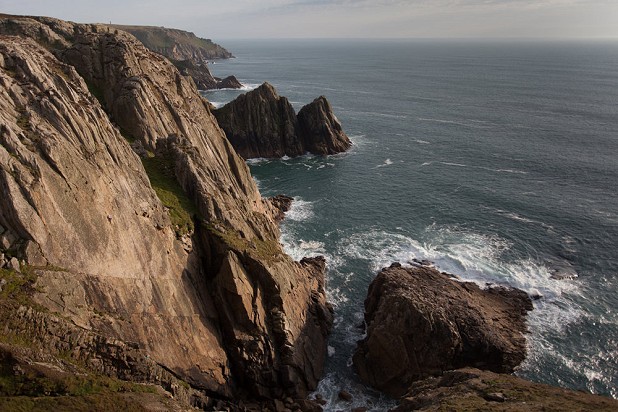


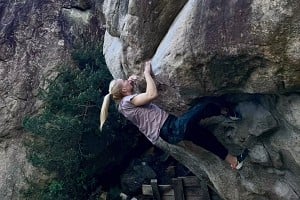
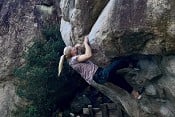




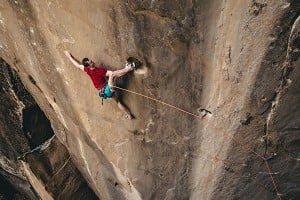
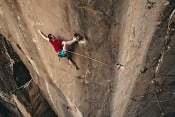


Comments
Gives me immense happiness to hear of these precious bird populations increasing by literally hundreds of percent!
Me too. Though they've managed this increase despite the lack of climbing restrictions in the areas which are now being limited...
Sad to think that my old mate the Castle Cottage rat isn't around any more. He was actually quite considerate, never taking more than one bite out of any item on the fruit bowl.
I've given both you and Blake a like. Not I think contradictory. The new restrictions would be more convincing if there was evidence that climbers' presence in early August had adversely affected breeding birds. There seems to be evidence that the bird numbers have actually increased at cliffs which were not restricted in these weeks.
However, I fully support bans on cliffs which are home to rare birds wherever climbing is shown to adversely affect bird numbers.
The warden apologises to climbers who have made plans already for summer 2019 and will now find their climbing restricted in ways they didn't expect. (And the restrictions in the bird nesting season are quite substantial - especially for regular visitors who have already largely climbed out the prime non-restricted cliffs at their grade). I'm afraid I'm inclined to think the Lundy Company and/or the Landmark Trust should go further than apologising and consider refunding deposits to any climbing groups who now wish to cancel their accommodation booking which they have already made in good faith for the first weeks of August in 2019 or 2020. Bookings for the Barn - probably the most popular climber accommodation on the island - need to be made two years in advance to secure a space in tide-friendly weeks in August. In the future it should be clear to climbers not to book in early August. But for an interim period of two years refunded deposits would, I feel, be appropriate if requested.
As it happens our club has paid a deposit of roughly £600 for a Barn booking for the third week in August 2020. So I hope we will be OK. But I notice that the restricted periods will be reviewed annually. So I'm not sure we can be certain at present.
I hope others don't consider this post out of turn or harmful to future relations between Lundy and the BMC. I congratulate all those who have volunteered their time to reach this agreement.
Martin
Nice one all those involved in negotiating a sensible way forward. There have been August restrictions for years that persist at the warden's discretion, so I don't see that the new arrangement is significantly deterimental. And great that bird numbers are on the up!